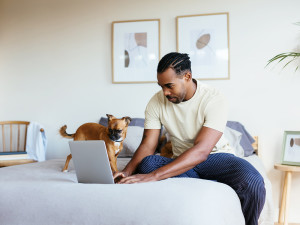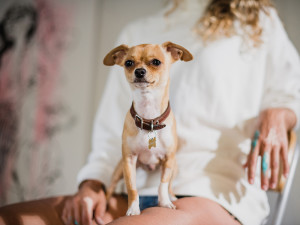So, How Are All The Pandemic Pets Doing in 2023?
It’s been three years since adoption rates spiked. Let’s check in on those pets.
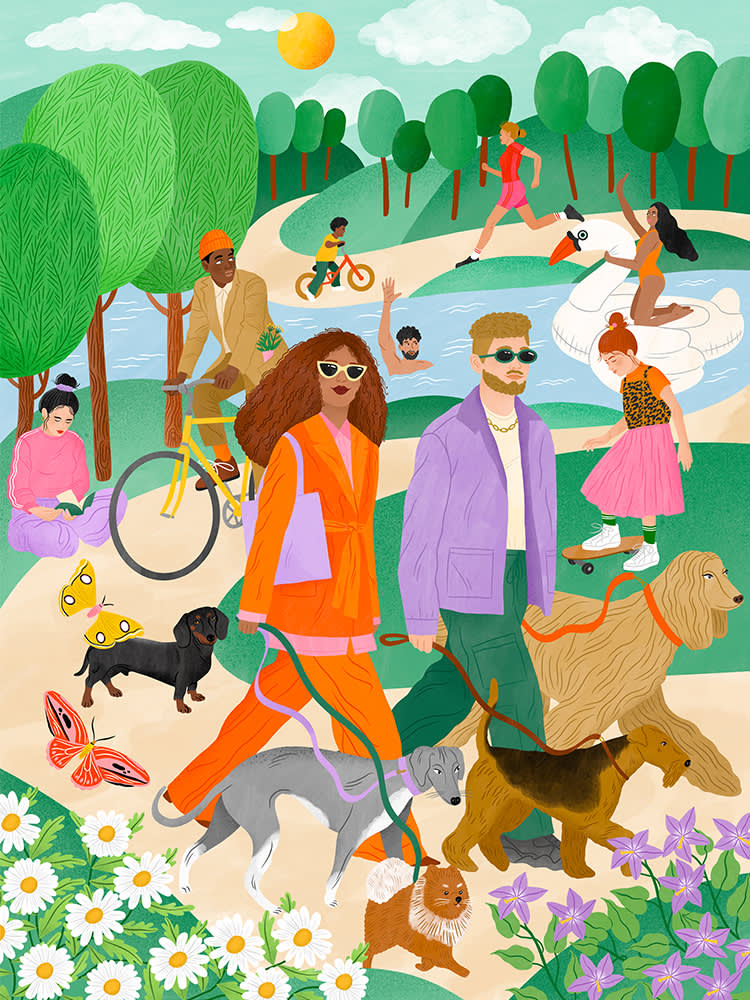
Share Article
Being a pet during the COVID-19 pandemic had its perks. Adoption rates were sky highopens in a new tab, shelters and rescue organizations had mile long waitlists, and pets enjoyed unprecedented amounts of quality time with their homebound parents.
One less desirous side effect, however, was the surge in separation anxietyopens in a new tab rates between pets and their parents once the world reopened again. My husband and I experienced this firsthand with our dog, Brieopens in a new tab. Despite our best attempts at crate trainingopens in a new tab her after adopting her in 2020, Brie exhibited severe signs of distress whenever we left her home alone. Think: shaking, whimpering, crying, and barking.
In all other areas, Brie was a well-adjusted puppyopens in a new tab. She was friendly with other dogs, loved people, and quickly mastered potty trainingopens in a new tab and basic commands. With one or both of us at home, she roamed happily, napping by herself in other rooms. But when we tried to leave the house — even for a few minutes — her response was the same: utter panicopens in a new tab.
Three years and countless hours of training later, we’ve made some progress, but leaving her home alone is still a struggle. She is extremely attached to us, and we are attached to heropens in a new tab. The experience has led me to wonder: How are all the other pandemic pets doing? Below, a few pet parents who give us the update on how their 2020-era pets are doing in 2023.
Thriving…Mostly
Allison, who lives in Brooklyn, rescued her dog, Oliver, in January 2021 through Bideaweeopens in a new tab, an animal rescue organization. It was love at first sight when the pair met, and Oliver adapted quickly to his new home. A dog park across the street from Allison’s apartment provided ample opportunities for socializing, and a trainer came to meet them outdoors to work on leash trainingopens in a new tab. Life was good.
Allison worked remotely until February 2022, when she had to resume going into her office opens in a new tabthree days a week. Although she trusted Oliver to stay alone in the living room, she set up a cameraopens in a new tab to keep an eye on him.
“At first, when I would leave the apartment, I would hear him crying,” Allison recalls. “I would obsessively check the camera all day, and he would just be sitting by the door. He seemed kind of sad, which made me sad.”
Eventually, she noticed a shift in his attitude. “All of a sudden, I felt like he became a teenager. I checked the camera one day and found him sitting on the living room table!” Mom wasn’t home, and he was making the most of it.
Allison acknowledges that the adjustment from being together 24/7 to spending time apart may have been harder for her than Oliver, sharing that she still struggles when she leaves him. On a recent work trip to Europe, she visited several dog-friendly businesses and found herself missing him. “I definitely have separation anxiety,” she admits. (Same.)
Today, Oliver is thriving…mostly. Allison and her boyfriend live together now, and he still works remotely, so Oliver has company during his days again. The couple started traveling with Oliver at a young age, and he is well-trained and happy when they bring him on vacationopens in a new tab.
Still, when Allison has to leave on business trips, her boyfriend reports that Oliver seems especially stressed and needy. And when he is with Allison, he occasionally growls or barks at other dogs and people that try to approach them. “I’m not sure if it’s pandemic related or not, but he is very protective of me and can be wary of people,” she says.
Still Adapting
When Catherine adopted her puppy, Finn, in Los Angeles, COVID-19 vaccinations were still a few months away, and most of the city was still sheltering in place.
“It was February 2021, so we spent most of our time indoors,” she recalls. Because of this, Finn learned to do his business on pee pads inside her apartment. While he was an affectionate and sweet puppy, he spent most of his formative months inside with Catherine and was reluctant to play with other pups when they visited the dog parkopens in a new tab. Fast forward two years, and Finn is still uncomfortable with the great outdoors.
Catherine says it’s a struggle to get him to walk on a leashopens in a new tab, and he still hasn’t grasped the concept of going to the bathroom outdoors. “I’ll take him on a two-hour walk, and he won’t do anything. The second we walk into the house, he runs straight to his pee padsopens in a new tab and does his business.” When she removes the pee pads all together, he has accidents in the middle of her living room.
“I do wonder if we would have had this issue had I not gotten him in the middle of a pandemic,” Catherine admits. Despite her frustrations, she says she would not trade a second with Finn, recalling how much joy he brought her during those lonely months of quarantine. They are currently working with a trainer who is optimistic about Finn’s progress.
Social Butterfly
Like many young adults, Eric moved back home with his parents at the start of the pandemic. His childhood dog, then 15, kept him company during the early days of COVID-19. But in March 2021, his dog passed away.
“After he passed I needed some time to heal and grieve,” Eric recalls. “I was really hesitant to get another pet because I was scared of losing another one.” Eventually, Eric realized how deeply he missed having the presence of a pet in his life. In September 2021, he brought home Banjo, a three month old Schnauzer mix.
Eric was extremely cautious about exposure to COVID-19, especially living in New York City, but having Banjo helped him to mellow out, especially once he’d received his first vaccine dose. “I will never have the mentality that the pandemic is completely over,” Eric says. “It’s just something that exists now. But as the general energy in the city became more relaxed, I knew I needed to lean into that for Banjo’s own development and let him say ‘hi’ to other dogs.”
Eric quickly discovered he had a social pup on his hands. Banjo was immediately enthusiastic and friendly around both people and animals and was happiest on long walks. Today, he is happiest when playing with dogs he encounters on his romps around NYC.
Given his pack mentality, leaving Banjo home alone proved to be initially challenging. “I was working remotely when Banjo was a puppy so I was home with him all the time for the first few months,” Eric says. When he began graduate school the following year, Eric started attending in-person classes three days a week and leaving Banjo home alone for a few hours at a time.
“I would definitely hear him whining or barking from the hallway whenever I left the apartment,” Eric recalls. The initial separation was difficult for both Eric and Banjo, so Eric set up a camera that allowed him to check in on his BFF when he was out.
“I noticed that by the time I got off the elevator and checked the camera from outside, he was already lying down and not crying anymore.” This insight into Banjo’s self-soothing process helped mitigate some of the guilt Eric felt over leaving him. He still thinks Banjo has a touch of separation anxiety, but they have both gotten a lot better at calming themselves down when they are apart.
In general, Eric isn’t sure that the pandemic had an impact on Banjo’s disposition. “I think the role it played was minor, if anything,” he says. “Maybe we would have started leaving him home alone sooner if life was normal, but I think his personality type would still have been social and that he still would whine when left alone.”
The Kids Are All Right
Overall, despite an increase in separation anxiety for all parties, the kidsopens in a new tab, aka, our pandemic pets, are all right. Most of them are happiest when reunited with their humans, but what pet isn’t? For my part, I’m going to keep working on empowering Brie to be her most independent self. And if extra cuddles are our biggest consequence in the meantime, I’ll take them.

Sarah Levy
Sarah Levyopens in a new tab is the author of Drinking Gamesopens in a new tab, a memoir in essays. Her writing has appeared in The New York Times, The Cut, and Vogue, among other publications. She lives in Los Angeles with her husband and their dog, Brie.
Related articles
 opens in a new tab
opens in a new tabHow to Fix Your Dog’s Non-Stop Barking
You can live in a quiet house again.
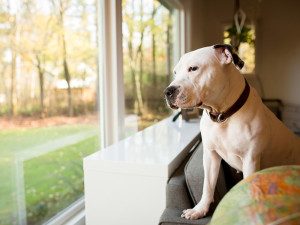 opens in a new tab
opens in a new tabSeparation Anxiety in Dogs
Does your dog freak out when you head for the door? Here’s some advice.
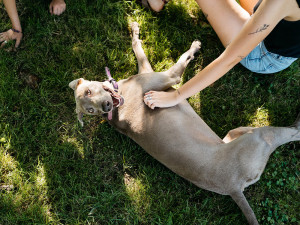 opens in a new tab
opens in a new tabResearch Confirms CBD Is a Safe Way to Get Your Dog to Chill Out
New research finds the hemp derivative can help your dog with car and separation anxiety.
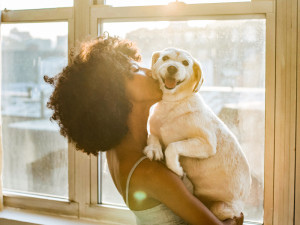 opens in a new tab
opens in a new tabPet Parents Get Separation Anxiety, Too
We asked both animal behaviorists and human psychologists how you can deal with leaving your dog home alone.
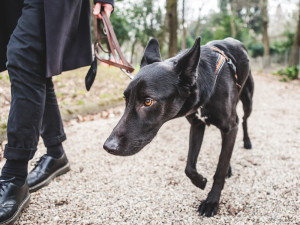 opens in a new tab
opens in a new tabHow to Help an Anxious Dog Conquer Their Fears
Pro tips for boosting the confidence of a scaredy-cat dog.
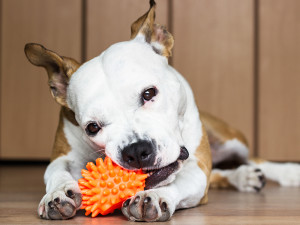 opens in a new tab
opens in a new tab6 Ways to Keep Your Dog Entertained While You’re At Work
Don’t hit pause on your pet’s playtime – these solo activities will help 9-5 fly by for them.
